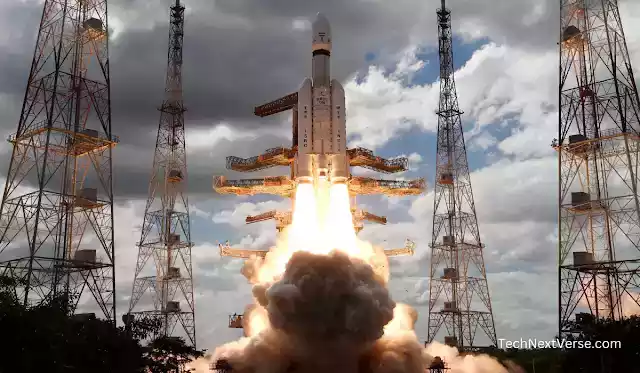
Introduction
India’s space agency, the Indian Space Research Organisation (ISRO), is all set to take another giant leap in lunar exploration with its upcoming mission, Chandrayaan-3. Building upon the success of its predecessors, Chandrayaan-1 and Chandrayaan-2, this mission aims to further enhance our understanding of the moon and pave the way for future scientific advancements. In this article, we will delve into the intricacies of Chandrayaan-3, exploring its objectives, technologies, and the potential it holds for India’s space program and global lunar research.
Chandrayaan-3: A Historic Leap Towards Lunar Discoveries
India’s Chandrayaan-3 mission is a significant step towards deepening our
knowledge of the moon. This ambitious endeavor combines the expertise of
ISRO scientists, advanced technologies, and a determination to unravel the
mysteries of Earth’s celestial neighbor. Let’s dive into the fascinating
details of this lunar exploration mission.
Overview of Chandrayaan-3
Chandrayaan-3 is India’s third lunar exploration mission, following the
successful Chandrayaan-1 and Chandrayaan-2 missions. It represents a
significant step forward in India’s space exploration endeavors. The mission
aims to deploy a lunar lander and rover on the Moon’s surface to conduct
scientific experiments and gather valuable data.
A. Chandrayaan 1: A Successful Lunar Mission
Chandrayaan 1 was a monumental achievement for India’s space agency. It
carried sophisticated instruments, including the Moon Mineralogy Mapper
(M3), which detected the presence of water molecules on the lunar surface,
revolutionizing our understanding of the Moon’s geology.
B. Chandrayaan 2: The Vikram Lander Incident
While Chandrayaan 2 had its setbacks during the Vikram Lander’s descent, the orbiter continues to be operational and has been capturing essential data since its arrival in lunar orbit. The ISRO team has used these experiences to enhance the design and mission planning for Chandrayaan 3.
C. Chandrayaan 3: Learnings from Previous Missions
Learning from both Chandrayaan 1 and Chandrayaan 2, Chandrayaan 3 has been
meticulously designed to address the challenges faced previously. One of the
primary objectives of Chandrayaan 3 is to revisit the South Pole region of
the Moon and conduct further studies on water ice deposits.
D. Addressing the Vikram Lander Incident
Chandrayaan 3 incorporates lessons learned from the Vikram Lander’s
experience and aims to ensure a successful landing on the lunar surface. The
ISRO team has taken into account the reasons for the previous mishap and
made necessary modifications to improve the lander’s chances of a safe
touchdown.
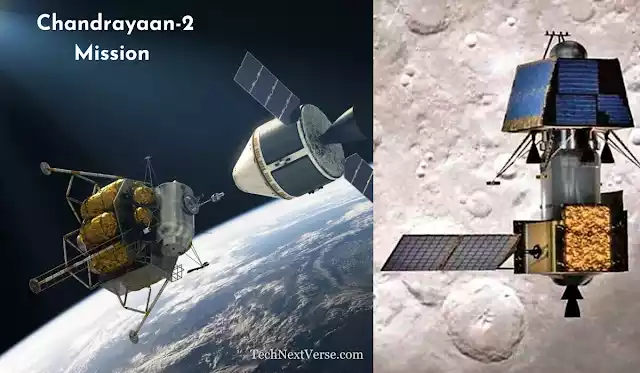
Objectives of Chandrayaan-3
The primary goals of Chandrayaan-3 are to demonstrate India’s technical
capabilities in soft landing and rover operations on the lunar surface. By
achieving a successful landing, ISRO aims to refine the technologies and
methodologies required for future manned missions to the Moon. The mission
also seeks to enhance our understanding of the Moon’s geology, topography,
mineralogy, and the presence of water ice.
● Chandrayaan-3 has several key objectives that drive its mission. Let’s
explore them in detail :
Ⅰ. Exploring the Lunar Surface : Chandrayaan-3 aims to conduct a comprehensive study of the lunar surface, mapping its topography, and analyzing its composition.
Ⅱ. Understanding Lunar Mineralogy : By analyzing the minerals present on the moon, scientists hope to gain insights into the moon’s formation and evolution.
Ⅲ. Investigating the Presence of Water : One of the primary objectives of Chandrayaan-3 is to confirm the presence of water ice in the permanently shadowed regions of the moon. This discovery would have profound implications for future manned missions and the establishment of lunar bases.
Ⅳ. Preparing for Future Missions : Chandrayaan-3 will serve as a crucial stepping stone for future lunar missions, helping ISRO refine its technologies and techniques for more ambitious explorations.
Ⅴ. Analyzing Lunar Soil : Chandrayaan-3 will analyze lunar soil samples to uncover valuable insights into the Moon’s geological history. The soil samples may reveal information about the Moon’s formation and evolution, shedding light on the early days of our solar system.
Ⅵ. Mapping the Lunar Surface : The mission will create detailed maps of the lunar surface, helping scientists identify potential landing sites for future missions. These maps will be crucial for planning and executing more complex lunar explorations.
Design and Development
Chandrayaan-3 is being developed as a collaborative effort between ISRO and
various scientific institutions and industries within India. The mission’s
design incorporates lessons learned from the previous Chandrayaan missions,
ensuring greater reliability and success. The spacecraft will consist of an
orbiter, a lander, and a rover, each serving specific purposes in the
mission’s scientific objectives.
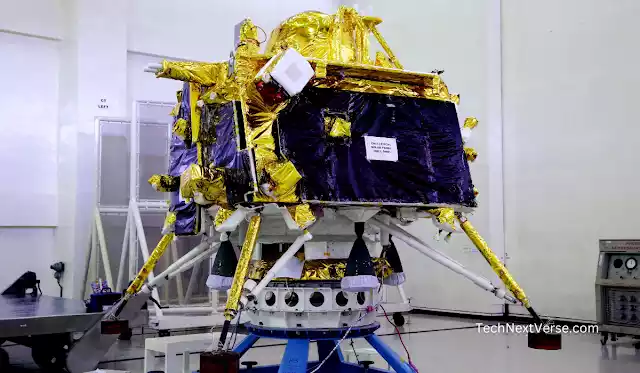
6. The Technological Marvels of Chandrayaan-3
The Chandrayaan-3 mission will carry a suite of advanced scientific
instruments to study the lunar surface in detail. These instruments include high-resolution cameras, spectrometers, and a seismometer, among others. They will provide valuable data about the Moon’s composition, mineral resources, and geological activities, aiding scientists in understanding the Moon’s origin and evolution.
See Also : Tesla Coil – How Tesla Coils Are Lighting Up the World Today
Chandrayaan-3 showcases several technological marvels that enable its
successful lunar exploration. Let’s take a closer look at some of them :
- Propulsion Systems : Chandrayaan-3 employs advanced propulsion systems to navigate the spacecraft through the lunar trajectory with precision and efficiency.
- Communication and Navigation : The mission relies on sophisticated communication and navigation systems to establish reliable contact with the spacecraft and transmit data back to Earth.
● Robotic Rover : Chandrayaan-3 features a state-of-the-art robotic rover called Pragyan. Equipped with scientific instruments, Pragyan will traverse the lunar surface,
collecting valuable data and images.
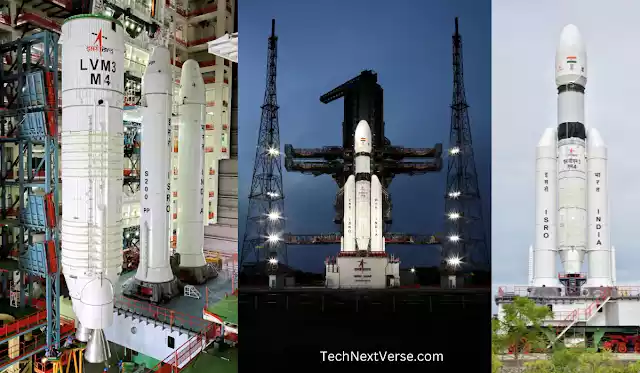
A. Chandrayaan-3’s Launch Vehicle (LVM3-M4)
The Geosynchronous Satellite Launch Vehicle Mark III or LVM3-M4 ( previously referred as GSLV Mk III) will serve as the launch vehicle for Chandrayaan-3. Known for its robustness and reliability, GSLV Mk III /LVM3-M4 has a high payload capacity, making it suitable for missions of this magnitude. The success of previous launches using GSLV Mk III further instills confidence in ISRO’s ability to execute the Chandrayaan-3 mission successfully.
B. Landing on the Lunar Surface
One of the critical aspects of Chandrayaan-3 is achieving a soft landing on the lunar surface. This feat requires careful planning and precise execution. The mission’s engineers and scientists meticulously select a landing site based on various factors such as safety, scientific interest, and resource availability. Once the landing site is determined, Chandrayaan-3 will employ advanced landing techniques to ensure a successful touchdown.
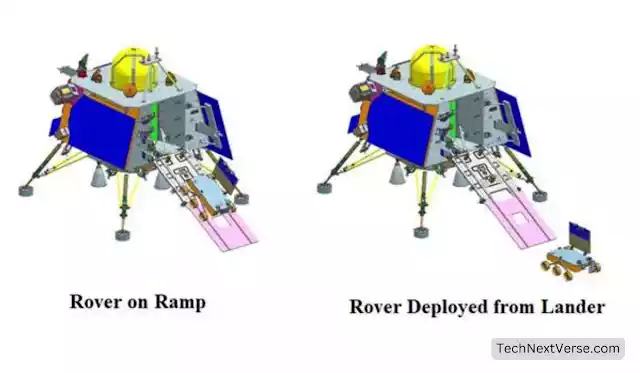
C. The Pragyan Rover : India’s Moon Explorer
The Pragyan rover is an integral part of Chandrayaan-3. It serves as India’s moon explorer, equipped with sophisticated scientific instruments and mobility capabilities. Pragyan will navigate the lunar surface, collecting crucial data about the moon’s geology, presence of water ice, and other significant parameters. This robotic rover will contribute significantly to our understanding of the moon’s composition and its
potential for future human missions.
D. Discoveries from Chandrayaan-1 and Chandrayaan-2
Chandrayaan-1 and Chandrayaan-2 have already yielded remarkable discoveries, paving the way for Chandrayaan-3. These missions provided invaluable data about the moon’s topography, mineral mapping, and the presence of water ice. Chandrayaan-3 aims to build upon these discoveries, leveraging the knowledge gained from previous missions to deepen our understanding of the moon’s mysteries.
E. Chandrayaan-3 : Building on Past Success
ISRO has meticulously analyzed the outcomes and lessons from Chandrayaan-1
and Chandrayaan-2. The insights gained have been instrumental in driving
technological advancements and improvements for Chandrayaan-3. Building on
the successes of its predecessors, Chandrayaan-3 promises to be a refined and enhanced version, better equipped to accomplish its scientific objectives.
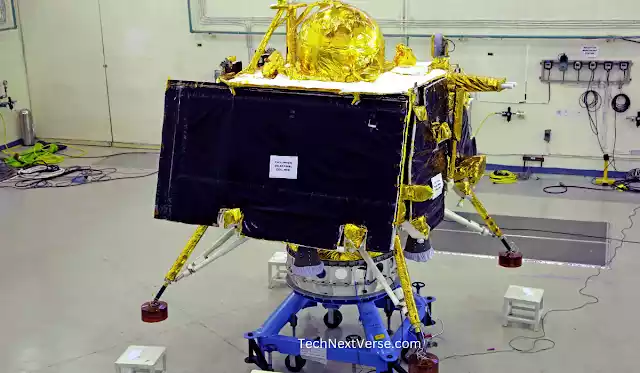
7. Chandrayaan-3’s Impact on India’s Space Program
Chandrayaan-3 holds immense significance for India’s space program. The mission exemplifies India’s technological prowess, further establishing the nation as a key player in space exploration. The advancements achieved through Chandrayaan-3 will not only contribute to scientific research but also inspire future generations of scientists and engineers. Moreover, the mission’s success will enhance national pride and serve as a catalyst for even more ambitious space endeavors.
8. The Significance of Lunar Exploration
Lunar exploration is more than just a scientific endeavor. It holds great importance for various aspects of human life and the future of space exploration. Some key areas where lunar exploration is significant include:
- Space Science : Lunar missions provide valuable data for studying celestial bodies, planetary evolution, and the origin of the universe. They contribute to
our understanding of the broader cosmos.
- Human Colonization : The moon has long been considered a potential outpost for human colonization. Lunar exploration missions help evaluate the viability of
establishing human habitats on the moon and support the long-term goal of space colonization. - Resource Utilization : Lunar missions enable us to identify and assess potential resources available on the moon, such as water ice. These resources can be
utilized for various purposes, including fuel production, sustaining human missions, and facilitating deeper space exploration.
9. Launch and Mission Timeline
ISRO is meticulously planning the launch and mission timeline of Chandrayaan-3. The mission is expected to be launched using the GSLV Mk III / LVM3-M4 launch vehicle from the Satish Dhawan Space Centre in Sriharikota, India. Chandrayaan-3 successfully launched at 2:35 pm, July 14, 2023. The lander and Pragyan Rover is expected to land near the lunar south pole region on 23 August 2023.
: The reasons for the long journey time :
- The free return trajectory is safer than a direct trajectory. A direct trajectory would require the spacecraft to fire its engines to slow down and enter lunar orbit. This would use up a lot of fuel, and it would also increase the risk of an engine failure.
- The GSLV Mark-III is not powerful enough to send the spacecraft directly to the Moon. The GSLV Mark-III is a medium-lift launch vehicle, which means that it is not as powerful as the Saturn V rocket that was used to launch the Apollo missions.
- The orbit-raising maneuvers take time. The spacecraft has to use a series of orbit-raising maneuvers to gradually increase its speed and altitude. These maneuvers take time, and they also use up fuel.
See also : LVM3-M4 / Chandrayaan-3 Mission- Launch Streaming
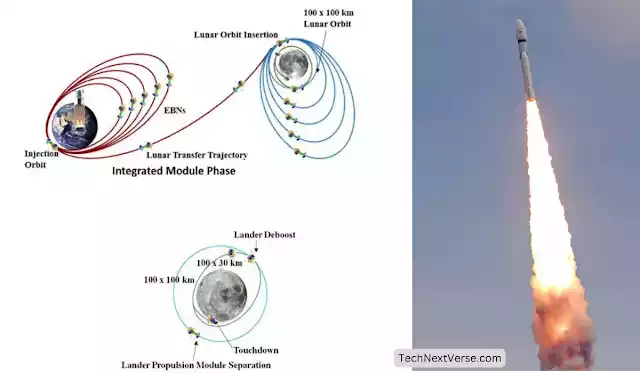
10. Collaborations and Partnerships
ISRO actively collaborates with international space agencies, including
NASA and ESA, to enhance the scientific value of Chandrayaan-3. These
collaborations facilitate the sharing of knowledge, resources, and
expertise, strengthening the collective efforts toward unlocking the
mysteries of the Moon. Such partnerships showcase India’s commitment to
global space exploration and foster international cooperation in the
field.
11. Technological Advancements
Chandrayaan-3 incorporates several technological advancements that build
upon the successes of its predecessors. The mission utilizes advanced
navigation and guidance systems, robust landing technologies, and improved
communication systems. These advancements demonstrate India’s capability to
innovate and push boundaries in the field of space exploration.
12. Challenges and Risks
Space exploration is not without its challenges and risks. Chandrayaan-3
faces the complexities of soft landing on the lunar surface, which requires
precise control and navigation. Factors such as the Moon’s gravitational
influence and surface conditions pose unique challenges that need to be
overcome. However, ISRO’s extensive experience and meticulous planning aim
to minimize these risks and ensure mission success.
13. Public Outreach and Inspiration
Chandrayaan-3 serves as an inspiration for future generations and ignites
public interest in space exploration. ISRO actively engages with the public
through various outreach programs, encouraging students and enthusiasts to
pursue careers in STEM fields. The mission’s progress and achievements are
widely shared through media channels, captivating the nation and instilling
a sense of pride and wonder.
14. Future Implications
The successful completion of Chandrayaan-3 will have far-reaching
implications for India’s space program and lunar exploration. It will
establish India as a leading nation in space technology, opening doors for
future missions, including manned lunar landings. The scientific discoveries
and technological advancements made during the mission will contribute to
global scientific knowledge and inspire further advancements in space
exploration.
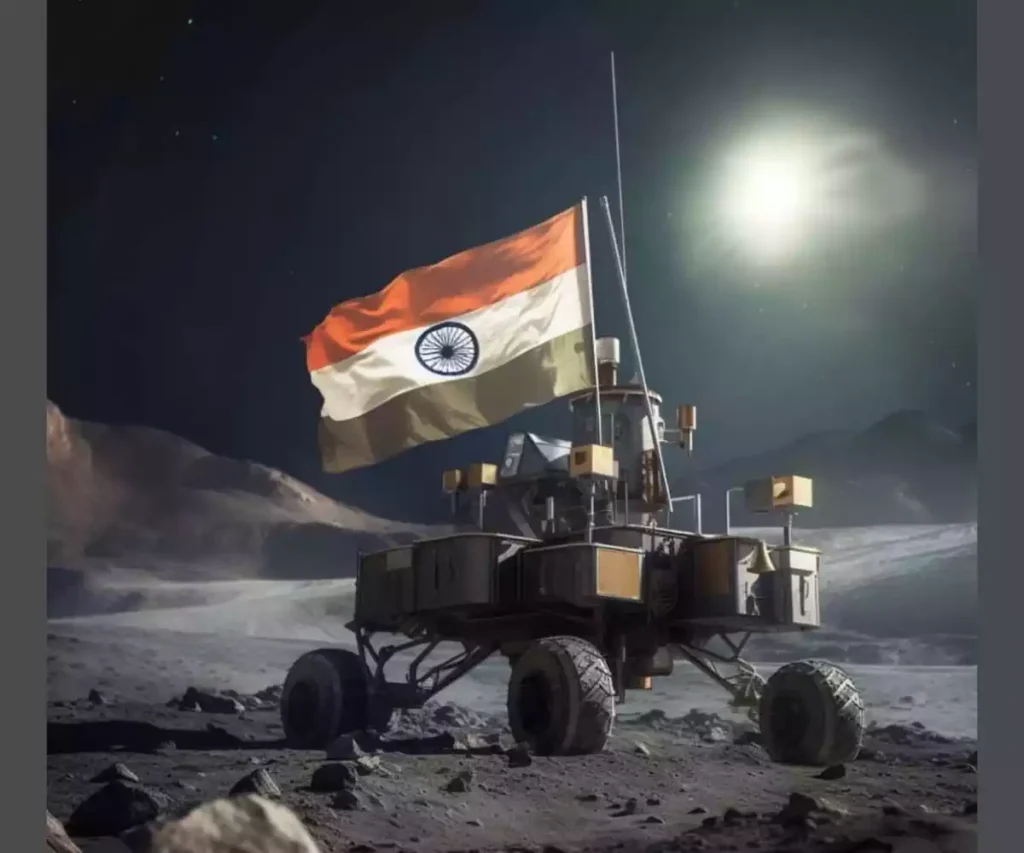
15. Conclusion
Chandrayaan-3 marks India’s next giant leap in lunar exploration. With its
ambitious objectives, cutting-edge technology, and collaborative spirit, the
mission aims to unlock the mysteries of the Moon and pave the way for future
space exploration endeavors. India’s commitment to scientific discovery and
its strides in space technology reinforce its position on the global stage
as a formidable force in the realm of space exploration.
FAQs :
1. When will Chandrayaan-3 be launched ?
Chandrayaan-3 successfully launched at 2:35 pm (IST), July 14, 2023 from Sriharikota space centre with LVM3-M4 rocket.
2. What are the goals of Chandrayaan 3?
Chandrayaan-3 aims to demonstrate India’s technical capabilities in soft landing and rover operations on the Moon, while also enhancing our understanding of the lunar surface and its resources.
3. How does Chandrayaan 3 contribute to scientific research?
The mission will gather valuable data about the Moon’s geology, mineralogy, and presence of water ice, providing scientists with crucial information to study the Moon’s origin and evolution.
4. What are the future implications of Chandrayaan 3?
The successful completion of Chandrayaan-3 will establish India as a leading nation in space technology and open doors for future missions, including manned lunar landings. It will also contribute to global scientific knowledge and inspire further advancements in space exploration.
5. Will Chandrayaan-3 carry a rover like Chandrayaan-2?
No, Chandrayaan-3 will consist of an orbiter and a lander. The rover is not
part of this mission to simplify the payload.
6. What are the key differences between Chandrayaan-2 and
Chandrayaan-3 ?
Chandrayaan-3 will focus on a successful soft landing, omitting the rover
present in Chandrayaan-2. It also incorporates lessons from previous missions
to improve the chances of success.
7. Why is Chandrayaan-3 taking around 40 days?
- The free return trajectory is safer than a direct trajectory. A
direct trajectory would require the spacecraft to fire its engines to
slow down and enter lunar orbit. This would use up a lot of fuel, and
it would also increase the risk of an engine failure. - The GSLV Mark-III is not powerful enough to send the spacecraft
directly to the Moon. The GSLV Mark-III is a medium-lift launch
vehicle, which means that it is not as powerful as the Saturn V rocket
that was used to launch the Apollo missions. - The orbit-raising maneuvers take time. The spacecraft has to use
a series of orbit-raising maneuvers to gradually increase its speed
and altitude. These maneuvers take time, and they also use up
fuel.
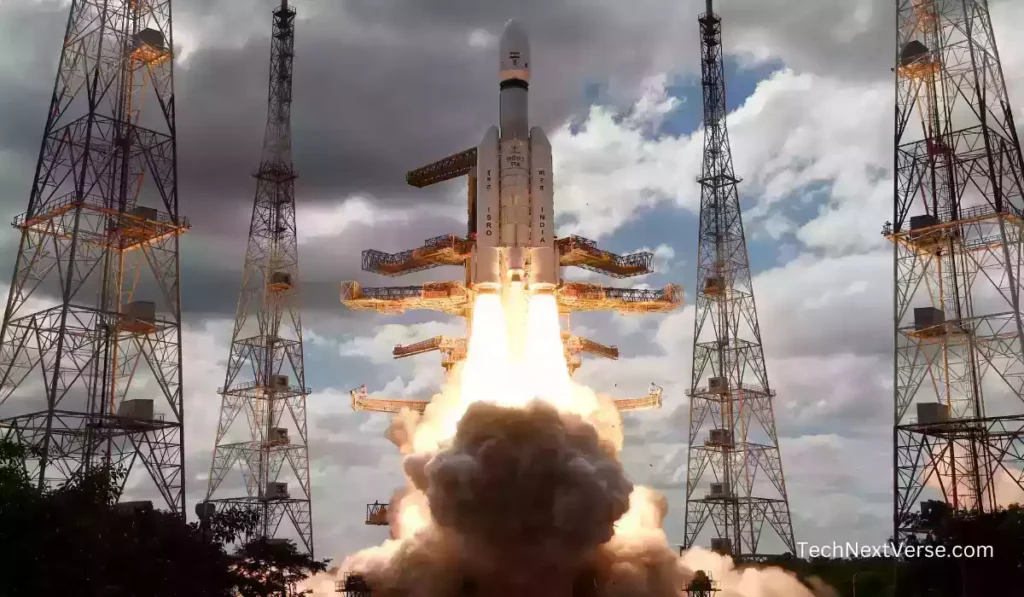
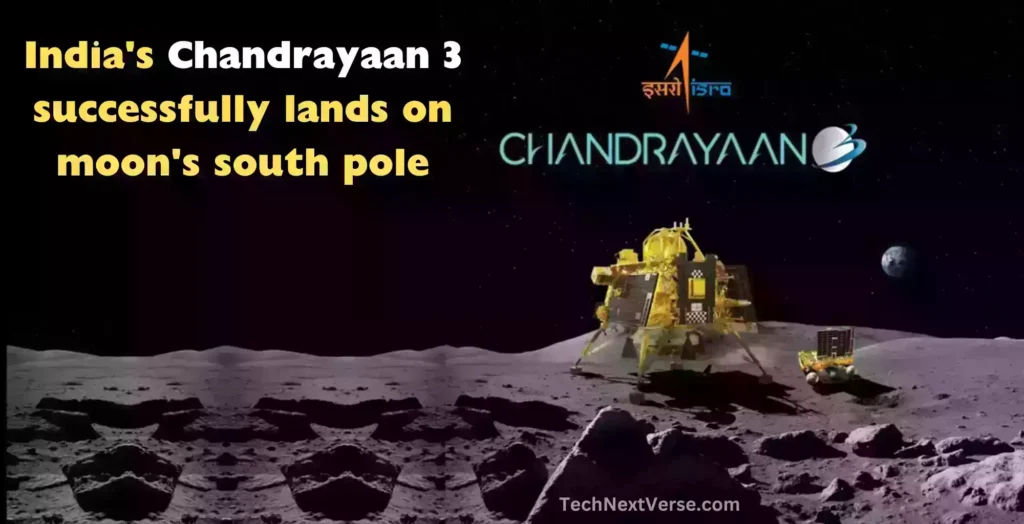



ভালো হয়েছে দাদা।
Good information👍👌